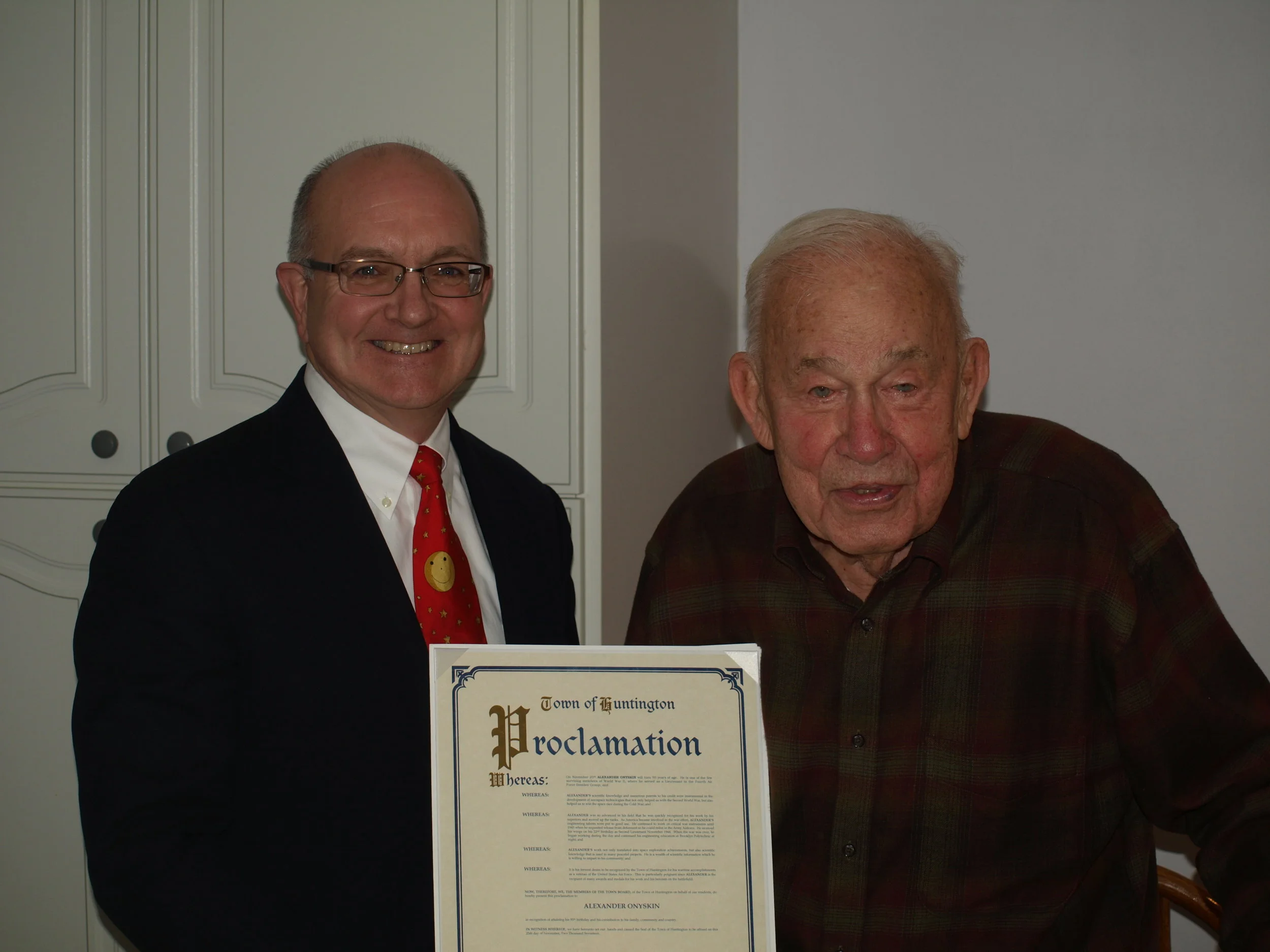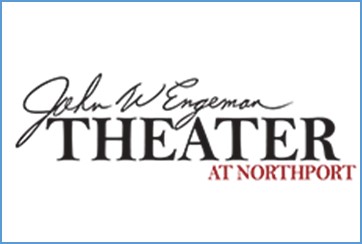Veteran, Engineer Honored For Roles In Military, Space Race
/Huntington Town Historian Robert Hughes, left, presents Huntington resident Alexander Onyskin with a Town Board Proclamation honoring his military service and engineering achievements. Long Islander News photos/Connor Beach
By Connor Beach
cbeach@longislandergroup.com
Alexander Onyskin simply wants his name to be remembered. And he’s not alone.
Friends of the 60-year Huntington resident, veteran and engineer led an effort last month to contact town officials, tell Onyskin’s story and detail his accomplishments, which include addressing a key flaw in the Hubble Space Telescope.
That effort culminated last Tuesday, when the 93-year-old was presented with a proclamation from the Huntington Town Board for his achievements in both military and civilian endeavors.
Onyskin was born in New Jersey in 1924, but grew up in Brooklyn where he graduated from Brooklyn Polytechnic High School in January 1941 with an aptitude for mechanical engineering.
“It was the best education anyone could ask for,” he said.
Straight out of high school, Onyskin was hired by the Ford Instrument Company to work as an engineer, but the United States’ entry into World War II shifted the focus of his work to wartime innovations.
“After Pearl Harbor, we started working on parts to help steer the Navy’s gunfire control instruments,” Onyskin said.
Like many young Americans in 1941, Onyskin wanted to join the military, but his technical knowledge was so advanced that his job was deemed vital to the war effort, he said. Onyskin received a full military deferment to continue his work.
In 1943, he requested a release from his civilian deferment in order to join the Army Air Force as an aviation cadet.
“In 1944, I was commissioned as a Second Lieutenant and got my flight wings,” Onyskin said. He went on to serve on the West Coast and over the Pacific in a bombardment group until he was discharged in October 1945.
After the war, Onyskin returned to his job as an engineer, continuing to learn and hone his skills, especially those involving the miniaturization of parts.
During the Korean War, Onyskin realized there was a need for skilled engineers who could design parts in the inevitable space race with the Soviet Union.
“In 1951, there was work to be had, so we started FAE Engineering Company and did skilled work to compete in the Cold War against the Russians,” Onyskin said. “All the companies were getting into space, and we designed components and made parts for the space programs.”
As the Cold War and the space race progressed, Onyskin and FAE Engineering became a reliable source of rocket parts for the U.S. government.
“They had a lot of engineers make a lot of mistakes, so they would take these rough sketches to my shop, and I would correct the mistakes and make the parts,” Onyskin said. “We would make the parts, and the first one was for the escape mechanism on the first suborbital flight with Alan Shepard.”
Onyskin said he also built the parts for the escape mechanism on a spacecraft used by John Glenn, but luckily it didn’t have to be used.
In addition to his work on manned spacecraft during the space race, Onyskin also played a role in the success of the Hubble Space Telescope.
“I started working on parts for the Hubble Telescope in the 1970s,” he said. “They asked me to build differential assemblies and my components.”
Onyskin contributed to the Hubble project a second time when miniature parts that his company designed helped to correct flaws in the main mirror of the telescope that were discovered after it was launched into space in 1990.
Onyskin was joined last week by many friends and neighbors to both reminisce, and accept the town proclamation.
Huntington Town Historian Robert Hughes presented Onyskin with the proclamation and said, “Mr. Onyskin served as a veteran in the Second World War, and his scientific knowledge also helped the United States win the space race during the Cold War.”







